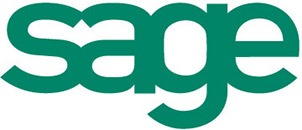The UK unemployment rate has increased to 5% in the three months to September, reaching its highest level since early 2021, according to newly released data from the Office for National Statistics (ONS). The rise is slightly sharper than anticipated and adds to indications that the labour market is beginning to lose momentum.
This uptick comes shortly before the government’s Budget later this month and could heighten the pressure surrounding the Chancellor’s forthcoming decisions.
Signs of a cooling jobs market
Although unemployment has edged higher, job vacancies have held broadly steady at around 723,000 between August and October. Initial figures also indicate that the number of people on company payrolls dropped by 180,000 in the year to October — a greater fall than many analysts had expected.
Liz McKeown, director of economic statistics at the ONS, noted that the latest figures “point to a weakening labour market”, with unemployment reaching a new post-pandemic peak. The ONS added that its unemployment estimates should be treated cautiously while work continues to strengthen data accuracy.
Wage growth slows
Average pay growth across the economy was 4.6% in the third quarter, easing slightly from 4.7% in the preceding three months. The gap between public and private sector pay continues to widen: public sector wages increased by 6.6%, compared with 4.2% in the private sector.
According to Yael Selfin, chief economist at KPMG UK, public sector pay growth is “approaching a peak” as last year’s settlements feed through. She also suggested that private sector wage increases are likely to moderate further as more people return to the workforce, easing pay pressures.
What this means for employers
For many companies, the data reflects what they are already experiencing. Richard Carter of Quilter Cheviot commented that, with the Budget only weeks away, numerous organisations have “shelved any major hiring plans” amid uncertainty over possible changes to costs or taxation.
The Federation of Small Businesses (FSB) reinforced this concern, highlighting that regulatory, litigation and tax demands continue to pose challenges for smaller firms trying to recruit staff.
Looking ahead
The Bank of England expects unemployment to remain close to 5% for the next few years, signalling that employment growth may stay muted over the medium term.
For business owners, attention now turns to the upcoming Budget — whether the measures announced will encourage job creation and investment, or whether additional cost pressures could exacerbate an already testing labour market.









